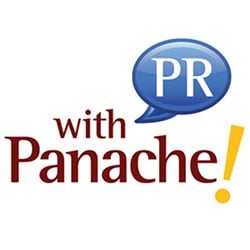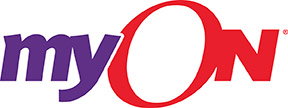From 350 miles north, San Francisco school officials watched the $1.3 billion iPad program in Los Angeles schools implode amid allegations of illegal spending, improper bidding on contracts and software bugs, not to mention students hacking the devices to bypass security blocking social media and other online sites.
Then those same San Francisco district leaders bought a bunch of iPads and started handing them out in schools up here. But they’d learned lessons from Los Angeles.
Instead of loaning kids tablets to take home, San Francisco’s Digital Literacy program is giving them to families for free, loaded with hundreds of books, learn-to-read software and educational games, and with open-ended access to the Internet. After the parents go through a training, the iPads are theirs to keep, no strings attached, and students are then able to access the same books and reading programs at home as they do at school.
And the district is starting small. Instead of blanketing schools with the tablets as L.A. did, San Francisco is starting in five schools and working only with first-grade classrooms and families. So far, there are sets of iPad Mini tablets in each first-grade class at the five schools. And 155 parents who have gone through or are currently enrolled in the training have received iPads.
“We went slow and thoughtful to go fast later,” said San Francisco Superintendent Richard Carranza. “My understanding is Los Angeles went fast to go fast.”
The first iPads hit Los Angeles classrooms in fall 2013, followed immediately by reports of technical glitches related to Wi-Fi or software, as well as concerns about students manipulating them to access the Internet. But the district ordered more, despite concerns about using bond money to buy them and the software being incomplete.
By fall 2014, the district canceled its contracts with Apple and software publisher Pearson over allegations of improper bidding. Also, an audit found that thousands of the iPads had gone missing. Still, the district resurrected the program, ordering more tablets and fixing bugs. As of December, Los Angeles Unified’s iPad program was the subject of an FBI criminal probe and a Securities and Exchange Commission investigation into the Apple and software contracts, as well as the use of bond money.
No public funds
Unlike in Los Angeles, San Francisco’s district isn’t using public funds for its project. The first $700,000 for the iPad Family Early-Digital Literacy pilot came from the $120 million commitment to Bay Area schools by Facebook founder Mark Zuckerberg and his wife, Priscilla Chan.
San Francisco was among the first districts to see some of the cash. Another $300,000 is being used for a high school leadership program.
The iPads, so far, are proving to be popular.
Parents who want to participate go through training that includes 20 lessons over several weeks. Topics range from the very basic — how to turn on the iPad — to advanced lessons on presentation, video and storytelling software.
After the training is completed, the iPads belong to the families. In addition, parents are eligible for discounted wireless Internet access at home — with service for $10 per month. The parents, not the district, are responsible for damage, loss or theft of the iPad, although they aren’t obligated to replace it.
District officials say they have no way to keep tabs on the tablets over the long term. They believe the time parents spend in training ensures a level of commitment that might not otherwise come with just handing out free iPads or even loaning them like Los Angeles did.
Using technology — specifically tablet computers — in schools has been somewhat hit and miss in terms of helping kids learn. Equipment failures and software bugs can waste time. And research on results is mixed.
But district officials say they can be used to individualize student learning, with software programs that allow each child to work on specific skills. In San Francisco, the iPads are loaded with myON, an interactive digital library of books that can cater reading to each child’s level, as well as a platform to help teachers track student progress.
More than 7,000 books
For example, teachers know that using iPads at school or home, students have read 7,058 books since mid-January.
In general, whether technology helps or hinders education comes down to good planning, adequate bandwidth and thoughtful use, said Muhammed Chaudhry, president and CEO of the Silicon Valley Education Foundation, a public education policy and advocacy organization.
“Technology is going to be more, not less, pervasive in the classroom,” he said. “Parents understanding and leveraging technology to help their kids is naturally a great thing.”
Ultimately, the district’s iPad program is designed to do three things, said Justin Barra, deputy director of Startup:Education, which is administering the Zuckerberg Bay Area grant money.
“It inspires students to learn,” he said. “It gives teachers new tools to reach students. And it finds a way to bring parents into the child’s education.”
John Muir Elementary dad Eric Mendez could have bought his own iPad. But he wanted to help his son, also named Eric, learn to read.
When Mendez, 28, got custody of his son a year ago, the then-kindergartener was struggling in school. He had trouble identifying letters or associating the correct sounds.
“He was behind all the other kids,” the single dad said. “He had a hard time.”
And so, every Tuesday for 12 weeks, Mendez spent up to 212 hours at the school taking the Digital Literacy courses. It wasn’t about getting a free tablet, it was about learning how to teach his son to use the device.
“It encouraged my son to learn,” Mendez said. “It made him fall in love with reading.”
Record day for reading
On a recent afternoon, Eric, now a 7-year-old first-grader, bragged about his reading level, his love of books about sharks, and his record for most books read in one day: 10.
He’s no longer lagging behind his classmates.
“It changed my life,” the first-grader said of the iPad. “I’m reading everything on the street.” To prove his point, he read all the words on a pizza box he cradled on his lap.
The iPads, whether in class or at home, have reading programs that help students learn sounds, sound out words or select books that they can read aloud into a microphone or have read to them with earphones.
Bret Harte Elementary Principal Jeremy Hilinski loves the link between the classroom and the kitchen table.
“The beauty of this is the kids are doing this at school; we’re teaching the parents how to do this at home,” he said. “This is how education should work.”


